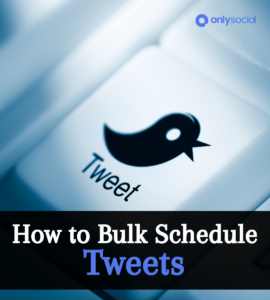In today’s dynamic and increasingly digitised business landscape, mastering Ad Management on Facebook has become an indispensable aspect of any successful marketing strategy. Instant access to billions of potential customers on the world’s most popular social media platform is a game-changer. And the tool facilitating this? Meta Ads Manager – Facebook’s very own interface for ad creation, management, and analysis.
Facebook, with its diverse user base, serves as an outstanding marketing platform for businesses spanning across various industries. Its reach is far, its tools robust, and its ability to microtarget audiences is exceptional. This potent combination presents unlimited business potential, but like any sophisticated toolset, it demands skill and proficiency in its use.
This guide demystifies the ins and outs of ad management on Facebook. Regardless of whether you’re a small business owner looking to widen your customer base, or a seasoned marketer aiming to give your ad strategy a boost, the following sections will bring you up to speed in no time. And the best thing? No marketing degree is required – just a keen desire to learn and a commitment to adapting.
As we walk through the whole process, from setting up your Ads Manager account to tracking and analyzing your ad performance, we aim to equip you with the confidence and knowledge to take advantage of Facebook’s extensive advertising possibilities.
Let’s dive into Ad Management on Facebook! From a beginner’s guide to top tips from industry professionals, everything you need to start making the most out of your advertising efforts is right here.
Please note that due to Facebook’s recent rebranding as Meta, we use both terms interchangeably throughout the piece.
Table of Contents
- 1 Understanding Ad Management on Facebook
- 2 Navigating the Meta Ads Manager
- 3 How to Create High-Performing Facebook Ads
- 4 Tracking and Optimizing Your Ad Performance
- 5 BONUS
- 6 Frequently asked questions
- 6.0.0.1 What is Facebook Ads Manager?
- 6.0.0.2 How do I set up a Facebook Ads Manager account?
- 6.0.0.3 What are Facebook Ad objectives?
- 6.0.0.4 What is A/B testing in Facebook Ads?
- 6.0.0.5 How can I track my ad performance on Facebook?
- 6.0.0.6 What is Facebook Pixel?
- 6.0.0.7 Can I edit my Facebook ad once it’s live?
Understanding Ad Management on Facebook

As we venture more into the realm of Ad Management on Facebook, it is essential to comprehend its significance in the grand scheme of digital marketing. Ad management is not a new concept. It’s primarily about creating, organising, tracking, and optimising ad campaigns. But the value that Facebook brings to this practice extends far beyond the traditional scope.
Facebook’s rebrand to Meta may seem inconsequential from a terminological perspective, but it signals an essential strategic shift keen on the metaverse – a virtual-reality space where users can interact with a computer-generated environment and other users. This change suggests even more significant opportunities for businesses, in terms of advertising, in the near future.
The Magic of Meta’s Ad Manager
Meta Ads Manager is an all-in-one tool that lets businesses create, set, and manage ad campaigns across Facebook’s family of apps and services, including Facebook itself, Instagram, Messenger, and Audience Network. It also includes a host of features built specifically for reporting and optimizing campaigns.
Here’s a brief highlight of its capabilities in summary:
| Capabilities | Details |
|---|---|
| Ad Creation | Meta Ads Manager allows for customizability and creativity in ad creation, offering various multimedia options. |
| Budgeting & Scheduling | You can specify your ad budget and choose when your ads run, giving you control over costs and audience reach. |
| Audience Targeting | Leverage user data for targeted advertising based on demographics, interests, and behavior. |
| Performance Tracking | Monitor the performance of your active ads, and adjust them to improve outcomes. |
| Campaign Management | Easily make changes to your ongoing campaigns, pause underperforming ads, or create new campaigns. |
The Impact of Effective Ad Management
Effective ad management can drive a considerable increase in brand recognition, consumer engagement, website traffic, and ultimately, conversions and sales. Regardless of the scale of your business, investing time and effort in understanding and mastering Facebook ad management can yield significant returns.
Whether your goal is to expand brand visibility, drive website traffic, or increase sales conversions, Facebook’s robust ad management platform is a powerful tool at your disposal. However, to fully harness its potential, businesses need to go beyond just knowing how it works – they should strive to understand the best ways to leverage its vast array of features for their unique needs.
With this in mind, we’ll delve into navigating Meta’s Ads Manager in our next section – the core of our guide. So, gear up and prepare to unravel the many ways in which you can make Facebook’s ad management functionalities work to your brand’s advantage.
Navigating the Meta Ads Manager

The Meta Ads Manager is at the heart of all your Ad Management operations on Facebook. While it may seem intricate at first glance, fear not. With some time and practice, you’ll navigate the platform like a pro. Let’s break down the important elements to make the journey smoother for you.
Accessing Meta Ads Manager
You can access the Ads Manager by simply logging into your Facebook account, clicking on the drop-down arrow located at the top right of your Facebook page, and selecting ‘Ads Manager’ from the drop-down list.
Setup Your Advertising Account
Before you plunge into creating campaigns, ensure you have set up your advertising account. To do this, enter your account settings and fill the necessary business and payment details.
The Ads Manager Dashboard
Once logged into the Ads Manager, you’ll be greeted by the dashboard. This is your control centre for Facebook ad management. Here, you can view and monitor the performance of your ad campaigns.
The dashboard displays several tabs including:
| Tab | Details |
|---|---|
| Account Overview | This tab provides a quick snapshot of how your ads are performing. |
| Campaigns | It lists all your campaigns and allows you to create new ones. |
| Ad Set | Here, you manage your ad sets. Each ad set can contain multiple ads. |
| Ads | This tab lists your ads. You can edit them directly from here |
Creating a New Ad Campaign
The Ads Manager provides you with two ways to create ads: Guided Creation and Quick Creation. The Guided Creation provides step-by-step instructions, making it perfect for beginners. On the other hand, Quick Creation lets you set up ads in any order, a feature more suited to seasoned advertisers.
Regardless of the method you choose, the process can be broken down into three essential steps: creating your campaign, creating your ad set, and creating your ad.
In summary, Meta’s Ads Manager is a powerful tool, made user-friendly by its neat organization. As you explore and experiment with different features, it will become an instrumental part of your Facebook ad management endeavors. Our next section will help you take this a step further with some pro tips on creating high-performing Facebook ads. So, stay tuned!
How to Create High-Performing Facebook Ads

Creating successful Facebook ads is more than just a scattergun placement of text and media. With careful Ad Management on Facebook, you can optimize your ads based on your audience, objectives, and available resources. This section will provide key insights into creating successful ads that can capture audience attention, engage them effectively, and ultimately lead to desired actions.
Understand Your Audience
This step is crucial – understanding who your audience is should be the foundation of your ad strategy. Thanks to Facebook’s detailed audience targeting, you can focus your ads on specific demographics, geographic regions, and consumer behaviors, ensuring your ads reach the most relevant audience.
Define Your Objective
In the Ads Manager, you’ll notice that the first step in creating a new ad campaign is choosing an objective. Facebook offers a variety of objectives, such as increasing brand awareness, driving traffic to your website, generating leads, and more. Your choice should align with what you aim to achieve through the campaign.
Design an Enticing Ad
Facebook ads allow you to use images, videos, carousels, and slideshows. Utilize these options by creating visually pleasing and appealing ads. Make sure your ads are consistent with your brand image. Remember, your ad design could be a determining factor in whether or not users decide to engage with your ad.
Craft Compelling Content
Your ad’s textual content needs to be concise, easy to understand and intriguing. Understand your audience’s pain points and phrase your solutions in a compelling way. The aim is to create a sense of urgency and inspire action.
Test and Tweak
Ad Management on Facebook isn’t a one-and-done process. It requires monitoring and fine-tuning your campaigns to achieve optimal results. Facebook provides A/B testing features which can be highly beneficial. This can help identify what works best for your audience.
Following these guidelines while creating Facebook ads will help in enhancing their performance potential. However, effective ad management doesn’t stop at creating compelling ads. Tracking and optimizing your ad performance is a crucial step, often a deciding factor in the ad campaigns’ success, and that’s exactly what we’ll dive into next.
Tracking and Optimizing Your Ad Performance
Effective Ad Management on Facebook involves tracking the performance of your ads and making necessary adjustments to optimize for better outcomes. After your advertisements are live, you’ll need to monitor how they’re performing and identify areas for improvement.
Using Facebook Analytics
Facebook provides in-depth analytics through its Ads Manager platform. By accessing your account insights, you can monitor metrics such as reach, impressions, clicks, conversion rates, and more. These insights provide a clear picture of your campaign’s performance and allow you to identify what’s working and what needs adjustment.
A/B Testing
Evaluating different adaptations of your ads is a proven way to optimize campaign performance. A/B testing (or split testing) allows you to compare two versions of an ad to see which performs better. You can change elements like the ad copy, calls to action, images or audience targeting, and then track which variation yields better results. Once you’ve identified the more successful version, you can focus your efforts and budget on that ad.
Setting up Pixel
Facebook Pixel is an analytics tool that allows you to measure the effectiveness of your advertising. It’s a piece of code you place on your website to track conversions, build targeted audiences for future ads, and re-market to people who’ve already taken action on your site.
By tracking user behaviour on your site, you can optimize your Facebook advertising for conversions, i.e., a sale, booking, or form completion. You can also set up ‘events’ on your pixel to record specific actions on your website, like page views and website searches.
Optimizing for Performance
After gathering data and insights, it’s time to optimize your campaigns. With Facebook’s Ads Manager, you can easily make adjustments to your campaigns, ad sets, or ads directly from your dashboard. If you identify underperforming ads, you can pause or stop them while reallocating your budget to the better-performing ones.
In conclusion, continuous monitoring and optimization a crucial aspects of Facebook ad management. It’s about being proactive and iterative, constantly finessing your strategy to achieve the best results. In our next section, we’ll wrap up with a concise checklist for success in Ad Management on Facebook.
BONUS
Optimize your Facebook ad management in 2024 with OnlySocial! Our platform revolutionizes social media planning and scheduling. Unlock the potential of seamless post management across all networks. With unlimited posting and the ability to manage countless social profiles, OnlySocial empowers your brand’s online presence. Don’t miss out on the game-changing Post Planning and Scheduling function – it’s the key to staying ahead. Take charge of your social media strategy with our commitment-free 7-day trial today.
Frequently asked questions
Navigating through the robust platform of Facebook for advertising can often bring up several questions. Here, we address some frequently asked questions related to Ad Management on Facebook to provide more clarity.
What is Facebook Ads Manager?
Facebook Ads Manager is a tool where you create, manage, and track your advertising campaigns on Facebook. It provides comprehensive options for ad targeting, creation, budgeting, and performance analytics.
How do I set up a Facebook Ads Manager account?
You can set up Ads Manager by logging into your Facebook account, clicking on the drop-down arrow at the top right of your Facebook page, and selecting ‘Ads Manager’. Setting up an account involves providing necessary business and payment information.
What are Facebook Ad objectives?
Ad objectives are what you want people to do when they see your ads. Facebook provides a selection of objectives such as brand awareness, reach, lead generation, conversions, and sales to help you choose what aligns best with your advertising goals.
What is A/B testing in Facebook Ads?
A/B testing, also known as split testing, allows you to create different versions of your ads to see which ones perform better. You can change various elements like the ad copy, images, or audience targeting, and then track which variation gets better results.
How can I track my ad performance on Facebook?
You can track your ad performance using Facebook Analytics available in Ads Manager. It provides varied metrics such as reach, impressions, clicks, conversion rates, etc., enabling you to understand how your campaigns are performing.
What is Facebook Pixel?
Facebook Pixel is a tool for tracking conversions, remarketing, and setting up automated bidding strategies. It’s a code placed on your website to track user activity from your Facebook ads.
Can I edit my Facebook ad once it’s live?
Yes, you can make changes to your ad after it’s live. However, significant edits – such as changes to the ad creative, target audience, or optimization event – can cause the ad’s learning phase to reset, potentially impacting its performance.
It’s important to note that while these answers are intended to assist with the most common questions users have, they barely scratch the surface of Ad Management on Facebook. Thus, continuous learning, testing, and optimizing can steer your ad campaigns toward success.




